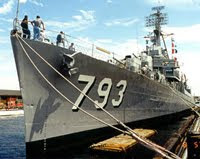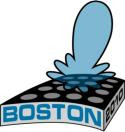



We are pleased to have Deborah G. Douglas, Curator of Science and
Technology, from the MIT Museum present Technology Goes to War:
World War II is sometimes called the "Wizards' War" because of the
extraordinary contributions made by the scientists and engineers to
the war effort. The nation's research universities were central to
this work but even among the most elite institutions, the
contributions of MIT are unparalleled. Many know of the famous MIT
Radiation Laboratory that made pioneering contributions to the
technology of radar and was the second largest wartime R&D project but
far fewer of projects such as Doc Draper's gunsights (which turned the
tide of the Navy's battle in the Pacific), the Chemical Warfare
Service Lab that transformed gas mask technology and invented gasoline
flame throwers, or Jay Forrester's early work on a flight simulator
that led to the Whirlwind computer. Dr. Douglas presents an
illustrated slide lecture that reviews the fascinating history of MIT
and the birth of the military-industrial-university complex.
This presentation will be at the MIT Lincoln Laboratory cafeteria at
6:00 PM, Wednesday, 14 July. For more information goto:
http://www.ieeeboston.org/org/subgroups/antennas_propagation.html
In preparation for this talk i am asking you to learn more about WW2
radar and optical sensor systems, gun laying computer systems, and the
feedback servo control systems used to direct the guns by visiting any
one of these local museums:
See many radar and optical systems, mechanical computer, and feedback
control systems used to precisely direct the guns of a WW2 era
battleship, you would be surprised at how sophisticated this equipment
is:
http://www.battleshipcove.org/
See the optical gun sight discussed in Debora's abstract here:
http://web.mit.edu/museum/
Visit a WW2 destroyer in Boston, loaded with the radar and optical
sensors and fire control computer system:
http://www.nps.gov/bost/historyculture/usscassinyoung.htm
Read up on the challenges of WW2 radar design (one of my favorite
books on the topic) by checking out this book at your local library:
http://www.amazon.com/Radar-History-World-War-Imperatives/dp/0750306599
Do your homework and bring some good questions for Deborah :) Feel
free to invite your friends who are interested in technological
history or military history.
Looking forward to seeing you next week!
Greg,
Chair AP-S Boston.


